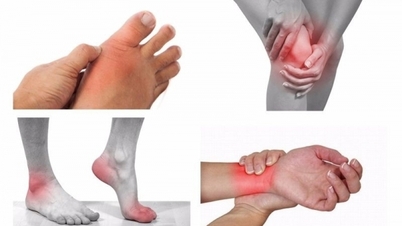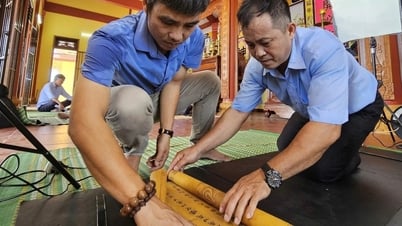Cervical arthritis is also known as cervical spondylosis. This is the result of cervical spondylosis, which often occurs silently. This process begins with the cervical discs losing water, the cartilage gradually wearing down, forming bone spurs, and in some cases, compressing the nerves, according to the health website Verywell Health (USA).

Prolonged neck pain and stiffness, accompanied by numbness in the neck and shoulders are warning signs of cervical arthritis.
PHOTO: AI
Warning signs that neck pain is actually due to cervical arthritis include:
persistent stiff neck
A dull ache in the neck, a feeling of stiffness that lasts for a long time, especially after waking up, and only gradually subsides after light exercise is a typical pattern of cervical osteoarthritis. Studies describe the pain as limiting movement, most uncomfortable in the early morning or late in the day. This is when the neck joints are less pumped with blood and lubricated.
Usually, neck pain caused by muscle strain will subside after a few days of rest. However, neck pain caused by cervical arthritis tends to recur in cycles and last longer. This is a warning sign that the cartilage has degenerated and bone spurs may be forming.
Pain radiating down the shoulder, shoulder blade or arm
The pain from cervical arthritis not only appears at the back of the neck but also runs down the shoulder, between the shoulder blades or down the arm, even to the thumb. This is a sign of cervical nerve root compression.
Neck pain caused by a strained muscle is usually localized to the back of the neck and is relieved by massage. Meanwhile, pain caused by neck arthritis is often accompanied by numbness, radiates along the nerve, and is worse when held in one position for a long time, such as working on a computer or driving.
Severe cervical arthritis can cause tingling in the shoulder.
Severe cervical arthritis can cause bone spurs or disc fragments to press on nerve roots or even the spinal cord. The result is numbness and tingling in the shoulders, forearms, and hands. Sometimes, the patient also experiences muscle weakness, making it difficult to grasp small objects such as pens or button up a shirt.
These sensory disturbances signal progressive nerve damage. Your doctor will often order an MRI or CT scan of your cervical spine to assess the extent of compression and prevent serious complications, such as balance problems or bowel and bladder problems, according to Verywell Health .
Source: https://thanhnien.vn/moi-co-kieu-nay-co-the-la-viem-khop-khong-phai-do-ngoi-sai-tu-the-185250627134903299.htm




![[Photo] Multi-colored cultural space at the Exhibition "80 years of the journey of Independence - Freedom - Happiness"](https://vphoto.vietnam.vn/thumb/1200x675/vietnam/resource/IMAGE/2025/8/26/fe69de34803e4ac1bf88ce49813d95d8)
![[Photo] Prime Minister Pham Minh Chinh receives CEO of Samsung Electronics](https://vphoto.vietnam.vn/thumb/1200x675/vietnam/resource/IMAGE/2025/8/26/373f5db99f704e6eb1321c787485c3c2)


![[Photo] Prime Minister Pham Minh Chinh chairs meeting of National Steering Committee on International Integration](https://vphoto.vietnam.vn/thumb/1200x675/vietnam/resource/IMAGE/2025/8/26/9d34a506f9fb42ac90a48179fc89abb3)




























































































Comment (0)